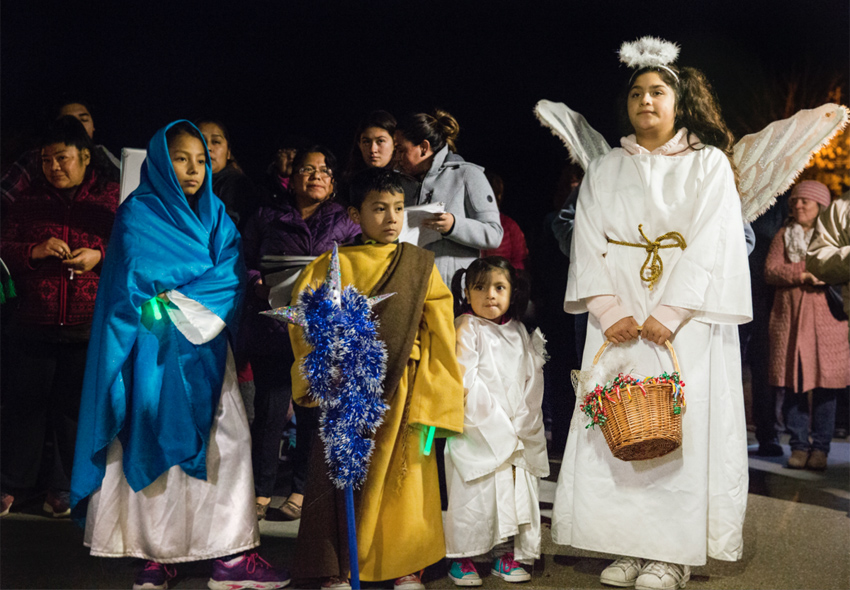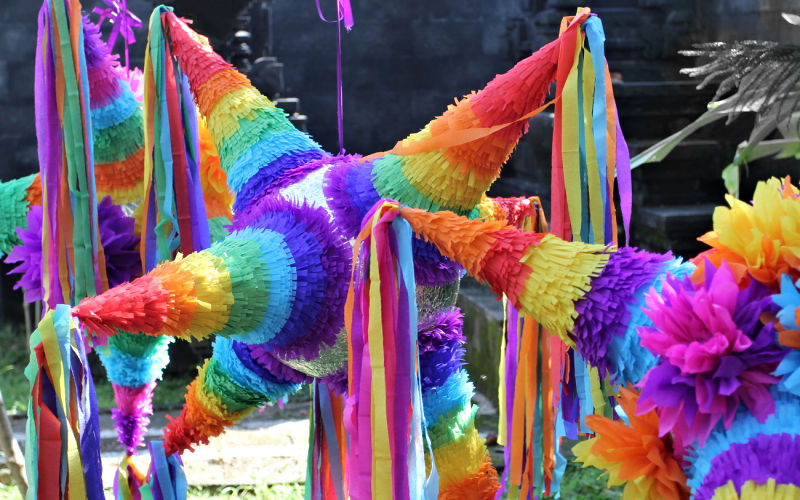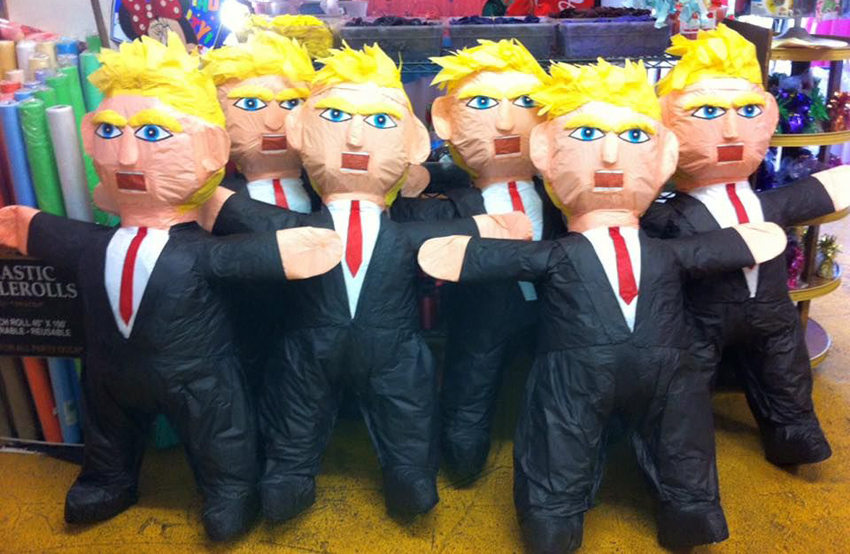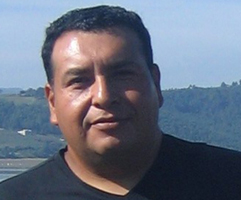Childhood is a magical time. Life was bigger and brighter then. To speak about Posadas today is to compare them to the Posadas of my childhood memory. Maybe that is not a fair comparison, but then we learn as adults, don't we, that life itself is not always fair.
To speak about Posadas today is to talk about change. Time has passed. Something is different now in this 2019. The people of my generation can notice those changes in the Posadas.

I don't want to say that the Posadas of my time were better than now because I am aware that each generation lives things differently. Still, the Posadas of my childhood were richer in tradition.
In my childhood the piñatas were homemade. Families made them with clay pots, cardboard, paper of different colors and textures, holding everything together with a paste, also homemade. We made use of our creativity to shape the piñata. The classic piñata, then and now, was a star. We put seven peaks on the star. These seven cones represented the Seven Deadly Sins. Striking them, in the process of breaking the piñata was a breaking or subduing of those sins.
In my neighborhood there were many children at every Posada. There could be 30 or more children waiting for their turn to hit the piñata. Those clay piñatas, when struck soundly, broke. Falling to the ground, they broke more. At this the children threw themselves to the ground to gather up fruits and the sweets, searching through the fragments for more.

The ceremony of breaking the piñata was formidable. I can still hear the cries of the children exclaiming: "Hit it! Give him it! Do not lose the target, because if you lose it, you lose the way!" All the children, young and old, as well as the adults tried to guide the one whose turn it was to swing the stick. Of course that person was blindfolded and was given a couple of spins to confuse his orientation.
Christmas Eve, the last Posada, may be celebrated a little differently by each family. The main thing is that now that it is Christmas, the baby Jesus has now been born and makes his appearance in statue form. Before dinner "the child is lulled" by a couple designated as god-parents, who also are responsible for providing the infant's clothes.
Today, while the religious basis of the Posadas has been maintained, as I mentioned, there has been a certain loss of tradition. For one thing, today it is rare that a family makes their piñata. Usually they buy it. Today there are almost no clay piñata, only cardboard. And the figures have also changed. Today you can find Trump and Spiderman piñatas along with many other celebrities and characters. For me this is a certain secularization of the ritual. I don't want Donald Trump attending my Posada no matter how many blows he receives.

In Mexico City, in years gone by we had a tradition of dancing after dinner. I haven't seen that in a long time. After dinner people go home. My experience is only my experience. And even less reliably, my memories are only my memories. Then, of course, there is regional variability. Christmas is celebrated differently in different parts of Mexico. This is only my opinion of yesterday's and today's Posadas.
The ritual of the piñata is followed by the distribution of what we Mexicans call ponche (punch). ponche is a mixture of cane syrup with guava and cinnamon. Some recipes include raisins, tejocote and other ingredients that I do not remember. And that is the point: I don't remember. If tradition has been lost it is hard to blame the youth. We older folks are the ones responsible for passing on the tradition, no?
Things change. There is no helping it. But the bottom line remains the same. The religious basis of the Posadas has been maintained. The variations do not really matter as long as there is a joyous family reunion.
Feliz Navidad / Merry Christmas.
**************

Ezequiel Ruiz: I am a Mexican blessed with many experiences both in Mexico and in the USA. I am a dreamer in the sense that I believe in creative human potential. I am a son, brother, cousin and friend, perhaps yours. Extend your hand and the conversation will begin.
I am an admirer of the Spanish and English languages. My job for some time has been to teach both languages. I enjoy being surprised by the living language and seeking secrets in the wonder of expression.
Contact:
